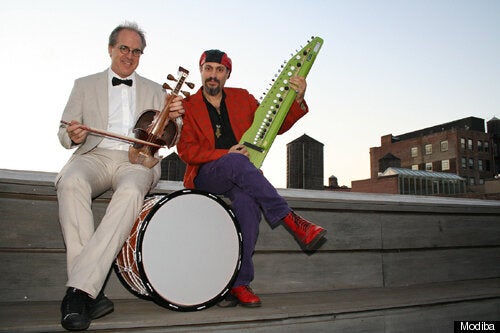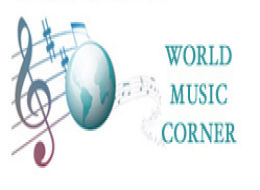

This is HuffPost World's regular feature that highlights interesting musicians and musical trends around the world. Know of a great musician doing ground-breaking work outside the United States? Send us your ideas for bands to profile or up-and-coming musicians to follow. Please fill out this survey form.
By Ian Merkel
Tribecastan. Those less versed in geography might guess a country near, well, all the other -stans. Those curious enough to find that the CIA World Factbook recognizes no such country might consider the possible deconstruction, Tribe-ca-stan. But few could imagine the musical geography that serves as the basis for John Kruth and Jeff Greene's newest album, Strange Cousin [Evergreene Music; 2009]--the mosaic of ethnic, linguistic, and musical influences that reside in the lower Manhattan neighborhood of Tribeca.Trying to describe Tribescastan's music or relegating it to a genre would be incredibly difficult, and, as the artists would contend, futile. Greene commonly described it as intergalactic, but not so much in the Sun Ra extraterrestrial kind of way. This music is really about the cross-fertilization of musical idioms that Kruth and Greene have been exposed to in their travels and the ways in which these idioms allow them to express the diversity that surrounds them in their very own New York. Some have asked why they play "peasant music in an affluent zip code," and their music has responded with the idea that homogeny is neither representative for our present nor characteristic of a progressive future. But at the same time that Tribecastan's newest album draws on instruments as diverse as the Bulgarian kaval (shepherd's flute), the Afghani rubab (short-necked lute), and Moroccan drums such as the darbuka, all in a single track "Dancing Girls," the imaginary nation's patrimony highlights profound connections with its musical subcultures. Kruth, Greene, and their guests play all of the instruments you hear throughout the album, unlike much of modern, sampled world music that only touches the surface of its components. Their music evokes place, and even though you can't quite pinpoint where you are, you can see the mountains, the desert, the dancers, and on track five "The Flowers (that I Placed at my Ancestor's Grave [that] Spontaneously Burst into Flame with Their Appreciation)." This is a peaceable kingdom, a "sonic mosaic," with no border wards. You might not need a visa to enter, but Kruth insists that you do need a barometer. No matter how experimental they may be, they certainly avoid any result that might taste like a "peanut butter and anchovie sandwich"--one that I imagine would probably be made with Naan. Even should you consider the music of Tribecastan as ungrounded or even dystopic, you will ultimately find that it captures and works within the world that surrounds you. People often talk of the rhythm imbibed into African children from infancy, tied to the backs of their mothers beating grain. If not necessarily rhythmic in the same sense, Western society is colored by sound from the subway to household appliances to the frustrations of gridlock traffic, which have inspired Kruth's own "Tribecastani Traffic Jam" of lower Manhattan. This piece, a free jazz explosion, invites you to reflect on how to make sense of everything going on in the song, and ultimately, all the sounds to which you are exposed daily. Certainly noise-cancelling headphones allow one interpretation of the album, but low quality earbuds--that come nowhere close to blocking out the sounds of the truck backing up and the chirping of parrots outside of the Laundromat--provide perhaps even better insight into what Tribecastan is like.The beauty of this music is that, at the same time that it might seem chaotic, it is also accessible. It comes out of the kind of jazz that employed folk melodies. It encourages you to hum along. And at the same time that it unsettles your notions of place, it invites you to partake in a more human modernity. The distinctive musical subcultures of Tribecastan often have their own sacred traditions, and, as a composite, Greene and Kruth's synthesis certainly reflects a broader vision.Strange Cousin's exploration of the very particular parts that make it up again bring us back to the idea of tribe, but as an album it promises to do so much more. The country's No Guitar Creed has been lifted, the boundaries between musical styles continue to be torn down, and the chaos of our modern world is profoundly explored, instead of being superficially mixed. Tribecastan is in the midst of dealing with its own modernity and invites us to explore our own.
Tribecastan plays September 25 at Le Poisson Rouge in New York.
Read more Global Music Corner stories here.